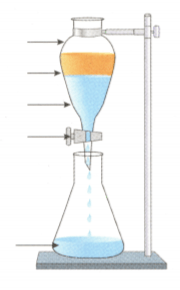R P Rana Solutions for Chapter: Elements, Compounds and Mixtures, Exercise 3: Exercise
R P Rana Science Solutions for Exercise - R P Rana Solutions for Chapter: Elements, Compounds and Mixtures, Exercise 3: Exercise
Attempt the practice questions on Chapter 3: Elements, Compounds and Mixtures, Exercise 3: Exercise with hints and solutions to strengthen your understanding. Its All About Science - Chemistry solutions are prepared by Experienced Embibe Experts.
Questions from R P Rana Solutions for Chapter: Elements, Compounds and Mixtures, Exercise 3: Exercise with Hints & Solutions
Match the column A with column B.
| Column A | Column B |
| 1. Alcohol from mixture of alcohol and water. | a. Evaporation |
| 2. Charcoal from a mixture of charcoal and water. | b. Crystallisation |
| 3. Copper sulphate crystals from copper sulphate in water. | c. Fractional distillation |
| 4. Sulphur from a mixture of sulphur and charcoal. | d. Sedimentation |
| 5. Iron from a mixture of iron and lead. | e. Magnetic separation |
Draw a neat and well-labelled diagram for the technique used for separation of kerosene oil from a mixture of kerosene and water.
Draw a neat and well-labelled diagram for the technique used for separation of salt from the sea-water.
Draw a neat and well-labelled diagram for the technique used for separation of chalk powder from a mixture of chalk and water.
Draw a neat and well-labelled diagram for the technique used for separation of ammonium chloride from a mixture of ammonium chloride and sodium chloride.
Define sublimation with suitable example.
Define filtration with suitable example.
Write the name of the process involved in the following diagram and also label the markings made in the diagram.

